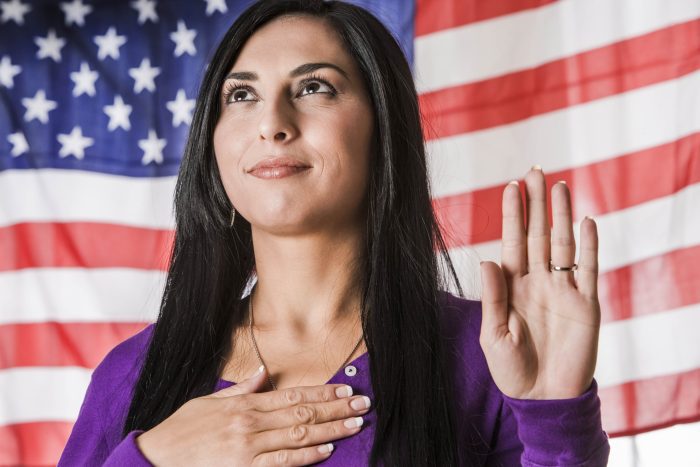By Karen Anderson
The journey to become an American citizen begins by meeting general requirements. You must be 18 or older to file Form N-400, Application for Naturalization, and be a lawful permanent resident (have a “Green Card”). You must prove continuous permanent residence in the U.S. for at least 5 years, or 3 years if married to a U.S. citizen, and have lived at least 3 months in your state of residence.
The general filing fee is $765. There can be other fees depending on the applicants situation. Applicants who have served in the military can have the fee waived. The U.S. Citizenship and Immigration Services (www.uscis.gov) has more information on other requirements and documentation needed.
This can be a difficult process to wade through and sometimes requires the services of an immigration lawyer, which can add an enormous expense and burden.
USCIS officers interview applicants to test their ability to read, write, speak and understand English. During the interview the applicants are asked personal questions about their background. The speaking test consists of photographs of everyday activities. The applicant must explain what is happening in the photos. Their knowledge of U.S. history and government is also tested. USCIS provides materials to study and prepare for the test. There are vocabulary lists focusing on history and civics topics. The civics test will have 10 questions taken from the list of 100 study questions, such as: What is the supreme law of the land?, or Who wrote The Declaration of Independence? The applicant must answer six out of 10 questions correctly.
The Naturalization Ceremony is the last joyous step. It’s the culmination of a long and difficult process filled with red tape, bureaucracy, hard work and determination. The pandemic caused a backlog of applications with the shutdowns and shuttered immigration offices. But now large ceremonies at parks, arenas and courthouses are making a comeback.Each month hundreds of immigrants from many countries across the world take the Oath of Allegiance — giving up allegiance to their country of origin, promising to defend and protect the United States and its Constitution against all enemies, bear arms on behalf of the U.S. and perform work of national importance under civilian direction when required by law.
Most immigrants come to America with the hope of achieving the American dream for themselves and their families. The judges presiding over the ceremonies often relate stories of immigrant ancestors who took a similar journey and made it possible for them to attain their own dreams. All Americans can relate to this and understand how challenging and life changing an experience that is.
The applicants are reminded that once they take the oath they are American citizens with all the rights, responsibilities, freedoms and privileges of every American. The happy smiles of the new citizens, and the friends and family members there to support and celebrate with them, makes it an inspiring occasion.
The League of Women Voters often attends these ceremonies to welcome the new citizens and assist them in registering to vote. This is a privilege and responsibility the new citizens cherish, as all Americans should. The League works diligently to register all eligible citizens and provides information to educate voters. Getting out the vote is a priority as the League believes everyone should make their voice heard. Voting is an American right (and responsibility) envied around the world. The League works to help voters understand and make an informed choice in the voting booth.
Last September 17 was Constitution Day, Citizenship Day and National Voter Registration Day. The Smithtown League and Five Towns College collaborated to register students. All students were quizzed about the Constitution and tried to answer basic civics questions that aspiring citizens are asked (and could win food or candy for participating!). The League also provided information about early voting and propositions appearing on the ballot. It was a great day to celebrate our democracy with enthusiastic young people who we hope will be responsible voters and civically engaged as adults.
Karen Anderson is a member of the leadership team of the Smithtown League of Women Voters, a nonprofit, nonpartisan organization that encourages the informed and active participation of citizens in government and influences public policy through education and advocacy. For more information, visit https//my.lwv.org/new-york/suffolk-county.







